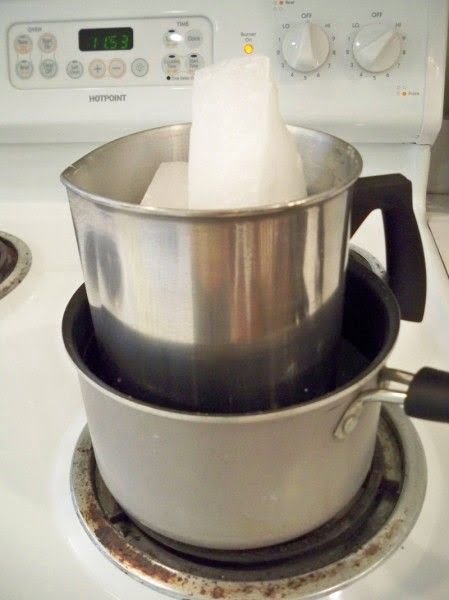Soybean wax for candle making has become increasingly popular in recent years due to its numerous benefits and environmental advantages. Derived from soybean oil, this natural wax is a great alternative to traditional paraffin wax and other types of candle waxes. In this article, we will delve into the world of soybean wax, exploring its production process, benefits, comparison with other waxes, and tips for using it in candle making.
Soybean wax is a renewable and biodegradable resource, making it an eco-friendly choice for candle making. It offers a cleaner and longer burn than paraffin wax, while also providing a stronger scent throw when used in candles. Additionally, soybean wax is known for its ability to hold color well and produce a smooth finish on candles. These qualities have made it a top choice among crafters and manufacturers alike.
In comparison to other candle waxes such as paraffin and beeswax, soybean wax stands out for its sustainability and clean burning properties. It produces less soot and toxins when burned, creating a healthier environment for both the user and the planet. With the rising demand for natural products, soybean wax has become a go-to option for those seeking an environmentally conscious alternative for their candle making endeavors.
Benefits of Using Soybean Wax for Candle Making
Soybean wax has gained popularity in the candle making industry due to its numerous benefits. When considering which type of wax to use for candle making, soybean wax stands out for various reasons. Here are some of the key benefits of using soybean wax for candle making:
- Clean Burning: Soybean wax candles burn cleaner than traditional paraffin candles, emitting less soot and toxins into the air. This makes them a healthier option for both the environment and indoor air quality.
- Renewable and Sustainable: Soybean wax is made from renewable resources, namely soybeans, making it an eco-friendly choice. Unlike paraffin wax, which is derived from petroleum, soybean wax is biodegradable and supports agricultural sustainability.
- Long-Lasting: Candles made from soybean wax tend to have a longer burn time compared to other types of waxes. This means that they provide more value for money and can be enjoyed for a longer period.
In addition to these benefits, soybean wax also has excellent fragrance-holding qualities, allowing it to hold essential oils and fragrance oils well. This makes it an ideal choice for scented candles. Furthermore, soybean wax has a lower melting point than paraffin wax, which makes it easier to handle when melting and pouring during the candle-making process.
Overall, the numerous advantages of using soybean wax make it a popular choice among candle makers who are looking for a natural, sustainable, and high-quality option for their products.
Comparison With Other Candle Waxes (Paraffin, Beeswax, Etc)
When it comes to choosing the right wax for candle making, there are several options available in the market. In this section, we will compare soybean wax with other popular candle waxes such as paraffin and beeswax.
Paraffin Wax
Paraffin wax has been a staple in the candle-making industry for many years. It is derived from petroleum, making it a non-renewable resource. While paraffin wax is known for its excellent scent throw and bright colors, it does produce soot and emits harmful chemicals when burned. On the other hand, soybean wax is biodegradable and renewable, making it a more eco-friendly option.
Beeswax
Beeswax is a natural byproduct of honey production and has been used for candle making for centuries. It has a natural sweet scent and burns cleaner than paraffin wax. However, beeswax can be expensive and may not hold fragrance as well as soybean wax. Additionally, beeswax candles tend to have a yellowish color, whereas soybean wax can easily be colored to any desired shade.
Other Alternative Waxes
In addition to paraffin and beeswax, there are other alternative waxes like coconut wax and palm wax. Coconut wax is known for its clean burn and excellent scent throw but can be cost-prohibitive for some candle makers. Palm wax is also sustainable but has a crystalline appearance that may not appeal to all consumers.
Overall, when compared to paraffin, beeswax, coconut wax or palm was; soybean wax emerges as an affordable and sustainable option that provides excellent scent throw, clean burning properties without compromising on quality. Its versatility in terms of color and fragrance make it a top choice among candle makers looking for an environmentally friendly alternative.
How Soybean Wax Is Made
Soybean wax is a natural and renewable resource that is derived from soybean oil. The process of making soybean wax involves a few key steps. First, the soybeans are cleaned and then cracked into small pieces. These pieces are then rolled into flakes, which are then put through a solvent extraction process to remove the oil. This oil is then purified and hydrogenated to create the solid wax form that is used in candle making.
The use of soybeans for creating wax has gained popularity due to its environmentally friendly nature. Soybeans are a sustainable and biodegradable resource, making soybean wax an eco-friendly choice for candle making. In addition, soybean wax has a lower melting point compared to other waxes, which allows for longer burn times and better scent throw when used in candles.
According to the United States Department of Agriculture, about 25% of the world’s soybeans are processed into soybean oil which can be further processed into soy wax. In addition, using domestically grown soybeans supports local farmers and reduces the carbon footprint associated with transportation.
| Aspect | Data |
|---|---|
| Soybean Wax Made From | Soybeans |
| Percentage of World’s Soybeans Processed Into Soy Wax | 25% |
Tips for Using Soybean Wax in Candle Making
Soybean wax is becoming an increasingly popular choice for candle making due to its numerous benefits and ease of use. When working with soybean wax for candle making, there are a few important tips to keep in mind to ensure the best results.
First and foremost, it is crucial to properly prepare the work area before using soybean wax. This includes ensuring that all equipment and containers are clean and free from any dust or debris that could compromise the quality of the candles. Additionally, it is important to have a reliable thermometer on hand to monitor the temperature of the wax throughout the melting and pouring process.
Another important tip for using soybean wax in candle making is to properly measure the wax and fragrance oils before beginning the melting process. It is essential to follow a precise recipe to achieve the desired scent throw and burn time for the candles. Using too much or too little fragrance oil can result in candles that do not perform as intended.
Furthermore, when melting soybean wax for candle making, it is important to be patient and avoid overheating the wax. Soybean wax has a lower melting point compared to other waxes, so it should be heated gently and slowly to prevent discoloration or burning. By following these tips, crafters can create high-quality candles using soybean wax that are both beautiful and fragrant.
Overall, utilizing these tips for using soybean wax in candle making will help ensure a successful and enjoyable crafting experience while producing high-quality candles that burn cleanly and evenly.
Soybean Wax Candle Making Process
Melting and Preparing the Wax
The first step in making candles with soybean wax is to melt the wax. This can be done using a double boiler, a wax melter, or even a microwave. It’s important to melt the wax slowly and gently to avoid scorching or burning. Once the wax is completely melted, it’s essential to prepare the containers by placing wicks in them. The wicks should be centered and secured in place to ensure an even burn.
Pouring and Cooling the Candles
After the wax is melted and the containers are prepared, it’s time to pour the hot liquid wax into the containers. It’s best to pour slowly and steadily to avoid spills or uneven filling. Once poured, the candles need time to cool and harden. It’s important not to disturb the cooling process, as this can cause imperfections in the finished candles.
Trimming and Finishing
Once the candles have cooled and hardened, it’s important to trim the wicks to about 1/4 inch before lighting them. This helps ensure a clean burn and prevents excessive smoking. At this point, any additional decorations or labeling can be added to personalize the candles. With these final touches, your soybean wax candles are ready to be enjoyed.
Scenting and Coloring Soybean Wax Candles
When it comes to making soybean wax candles, the possibilities for scents and colors are endless. One of the main advantages of using soybean wax for candle making is that it holds fragrance oils exceptionally well, resulting in a strong and long-lasting scent throw when the candle is burned. This means that whether you prefer floral, fruity, or even more unique scents like coffee or freshly cut grass, soybean wax can hold and disperse these fragrances effectively.
In addition to its superior scent throw, soybean wax also takes well to coloring agents. Whether you prefer vibrant and bold colors or more subtle and natural tones, soybean wax allows for easy incorporation of dyes or color chips to achieve your desired look for your candles. From single-color candles to intricately layered or swirled designs, soybean wax provides versatility in creating visually appealing candles.
For those who are environmentally conscious, it’s worth noting that many coloring agents used in soybean wax candle making are also eco-friendly. Natural dyes derived from sources such as plants, flowers, and fruits can be used to color soybean wax without compromising its sustainability. This further enhances the appeal of using soybean wax for candle making among those looking for a greener alternative in their crafting endeavors.
| Soybean Wax Characteristics | Details |
|---|---|
| Strong Scent Throw | Soybean wax holds fragrance oils exceptionally well |
| Color Versatility | Allows for easy incorporation of dyes or color chips |
| Eco-Friendly Options | Natural dyes derived from plants, flowers, and fruits can be used for coloring |
Environmental Benefits of Soybean Wax
Soybean wax for candle making not only offers a sustainable and eco-friendly alternative to traditional candle waxes, but it also provides several environmental benefits. One of the primary advantages of using soybean wax is that it is biodegradable, unlike paraffin wax which is derived from petroleum and releases harmful toxins when burned. By choosing soybean wax for candle making, you can significantly reduce your carbon footprint and contribute to a healthier environment.
Another environmental benefit of soybean wax is its renewable nature. Soybeans are a readily available and easily renewable resource, making soybean wax a sustainable choice for environmentally conscious candle makers. Additionally, the production of soybean wax generates lower levels of greenhouse gases compared to other waxes, further minimizing the environmental impact. This makes it an ideal option for those who are committed to reducing their reliance on non-renewable resources and decreasing their contribution to climate change.
Furthermore, the cultivation of soybeans for wax production promotes sustainable agricultural practices. Soybeans are often grown using methods that minimize soil erosion and reduce the need for chemical pesticides and fertilizers. By supporting the use of soybean wax in candle making, consumers can encourage sustainable farming practices that benefit both the environment and agricultural communities. Overall, the environmental benefits of soybean wax make it a compelling choice for those looking to create candles that are both beautiful and environmentally friendly.
Conclusion
In conclusion, soybean wax is undoubtedly the perfect choice for candle making due to its numerous benefits and environmental advantages. As discussed in this article, soybean wax is a natural and renewable resource that burns cleaner and longer than other traditional waxes such as paraffin. Its ability to hold scent and color makes it an ideal option for creating beautifully scented and vibrant candles.
Furthermore, when compared to other candle waxes like paraffin and beeswax, soybean wax stands out for its sustainability and eco-friendliness. The production process of soybean wax requires fewer resources and produces less waste, making it a more environmentally responsible choice for candle makers.
Additionally, the tips provided in this article on how to use soybean wax in candle making, along with the detailed process of creating soybean wax candles, demonstrate the ease and versatility of this wax for both amateur and experienced candle makers alike. With all these benefits considered, it is clear that soybean wax is not only an excellent choice for candle making but also aligns with the growing demand for sustainable and eco-friendly products.
If you are looking to create high-quality candles while also being mindful of the environment, soybean wax is definitely the way to go.

Welcome to my candle making blog! In this blog, I will be sharing my tips and tricks for making candles. I will also be sharing some of my favorite recipes.



